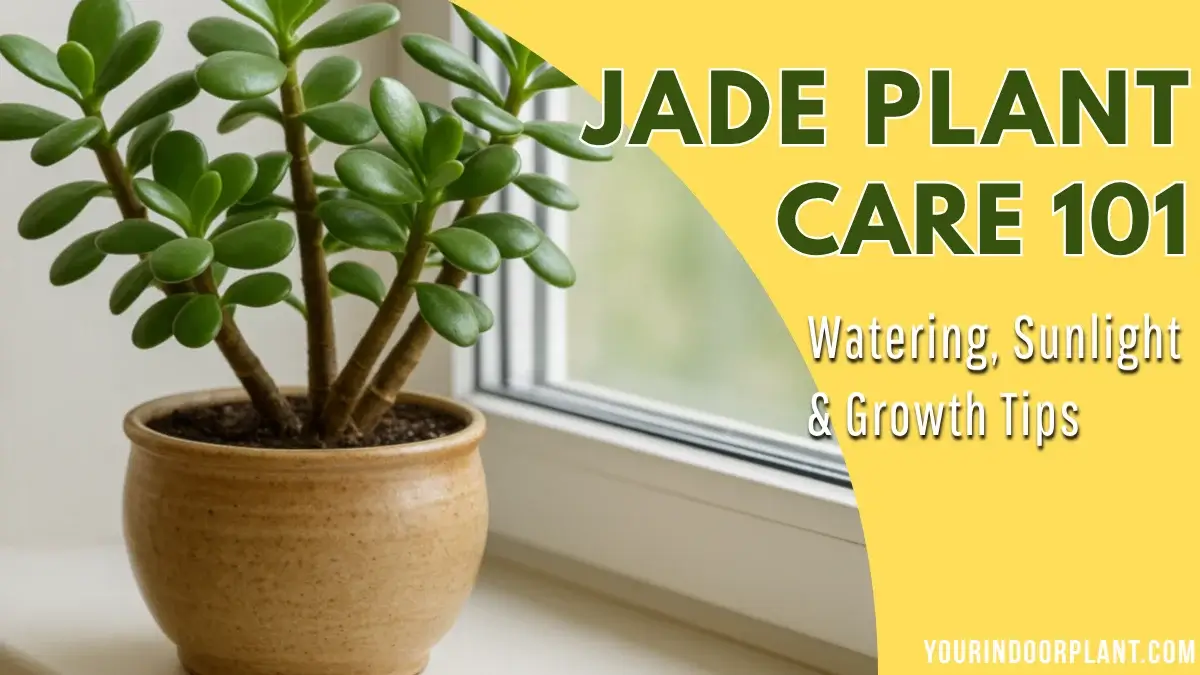Jade Plant Care 101: Watering, Sunlight & Growth Tips from Real Growers

Few houseplants are as forgiving—or as quietly beautiful—as the jade plant (Crassula ovata). Its thick, glossy leaves and tree-like stems make it a favorite among beginner and seasoned plant lovers alike. Treat it right and it can live for decades, sometimes even passed down like a family heirloom.
Below you’ll find everything you need to know to keep your jade thriving—from watering habits and light requirements to pruning, propagation, and solving common problems.
What Makes Jade Plants So Special?
Native to South Africa and Mozambique, the jade plant belongs to the succulent family, which means it stores water in its plump leaves. That built-in reservoir lets it shrug off a missed watering or two.
Jade plants are often called “money trees” or “lucky plants,” said to bring good fortune and positive energy. Whether or not you believe that, there’s no denying their charm: sturdy, sculptural, and endlessly patient.
Quick Jade Plant Care Summary
| Care Aspect | Ideal Conditions |
|---|---|
| Light | Bright, indirect sunlight (4–6 hours daily) |
| Water | Only when top 2 inches of soil are dry |
| Soil | Well-draining succulent mix |
| Temperature | 55–80°F (13–27°C) |
| Fertilizer | Light feeding every 2–3 months during spring/summer |
| Repotting | Every 2–3 years, or when roots outgrow the pot |
If you remember just one thing, let it be this: don’t overwater. Most jade plant problems start there.
Watering Jade Plants the Right Way
Because jade plants hold moisture in their leaves, they hate sitting in soggy soil. Always check before watering—stick your finger two inches deep; if it feels dry, water thoroughly until it drains out the bottom. Then leave it alone until dry again.
During winter dormancy, cut back watering to once every 3–4 weeks. Overwatering is the fast lane to root rot: the leaves turn mushy, then drop. If that happens, stop watering, trim any rotten roots, and repot in dry soil.
Personal tip: when I finally switched from a “schedule” to a “touch test,” my jade doubled in size within months.
The Ideal Light & Temperature for Jade Plants
Jades love light but can burn in harsh midday sun. Indoors, place them near a bright, south-facing window with filtered light. Outdoors, give them morning sun and afternoon shade.
If the leaves start turning red at the edges, it’s a sign of too much direct sunlight. Pale, stretched leaves mean it’s craving more.
Temperature-wise, they’re happiest between 55°F and 80°F. Keep them away from drafty windows or heaters in winter.
Choosing the Right Soil and Pot
Think “dry feet.” A gritty, well-draining mix is essential. Look for cactus or succulent soil, or make your own: two parts potting soil, one part perlite, one part coarse sand.
Terracotta pots are perfect—they breathe and let moisture escape. Always ensure there’s a drainage hole.
According to the Royal Horticultural Society, succulents like jades thrive best when their roots have a balance of air and moisture, so resist heavy, compact soils.
Fertilizing Jade Plants: What Works and What Doesn’t
Jade plants don’t need much food. During the active growing season (spring and summer), feed lightly every two or three months with a balanced, water-soluble fertilizer (10-10-10 or similar).
Skip winter feeding entirely; that’s their rest period. Overfertilizing can cause salt buildup, burning the roots and turning leaf tips brown. When in doubt, less is better.
Pruning and Shaping Your Jade Plant
A little pruning encourages thick, tree-like branching. Use clean scissors or shears and cut just above a node (where leaves meet the stem).
Remove leggy growth to keep it compact. Each cut usually encourages two new shoots, giving your jade a fuller look.
If a branch snaps, don’t panic—turn it into a cutting (we’ll get to that next).
Propagating Jade Plants from Cuttings
Jade plants are almost eager to clone themselves. Here’s how:
- Snip a healthy stem about 3–4 inches long.
- Let it dry for 3–5 days until the cut end callouses.
- Plant the cutting in dry succulent soil.
- Wait a week, then mist lightly. Roots form in 2–4 weeks.
Once rooted, care for it as you would a mature plant. You’ll soon have baby jades to gift or trade with friends.
Common Jade Plant Problems and Fixes
| Problem | Likely Cause | Fix |
|---|---|---|
| Yellow leaves | Overwatering | Let soil dry fully before watering again |
| Wrinkled, shriveled leaves | Underwatering | Water deeply, then drain well |
| Red or brown leaf edges | Too much direct sun | Move to bright, indirect light |
| Soft, mushy stems | Root rot | Trim rotted parts and repot in dry soil |
| Leggy growth | Low light | Prune back and move to brighter spot |
Most jade issues trace back to water or light. Adjust those two and you’ll solve 90% of problems.
My Personal Jade Plant Journey
When I first bought my jade, I treated it like a fern—regular watering, shady corner, lots of love. Within weeks, it was dropping leaves like confetti. After reading about its desert origins, I moved it to the sunniest window and cut the water drastically.
Now it’s a small tree, almost three feet tall, with thick, shiny leaves and new growth every spring. The transformation taught me patience and the value of watching the plant, not the calendar.
FAQs
-
Can I grow a jade plant in water?
Not long-term. They might root in water, but need soil to thrive.
-
How long do jade plants live?
Decades. Some family plants are over 70 years old.
-
Why are my jade leaves wrinkling?
It’s thirsty—water thoroughly, then let it drain.
-
Do jade plants bloom?
Yes! Mature jades sometimes bloom with small white-pink flowers in winter when they’re slightly stressed by cooler nights.
Keep Your Jade Thriving
Jade plants are the definition of low-effort beauty. Give them bright light, sparse watering, and a breathable pot, and they’ll reward you with glossy leaves and steady growth for years.
If you enjoyed this guide, check out our articles on indoor succulent care tips and DIY succulent soil mixes.
Happy growing—and may your jade bring a little extra luck to your home. 🌱
